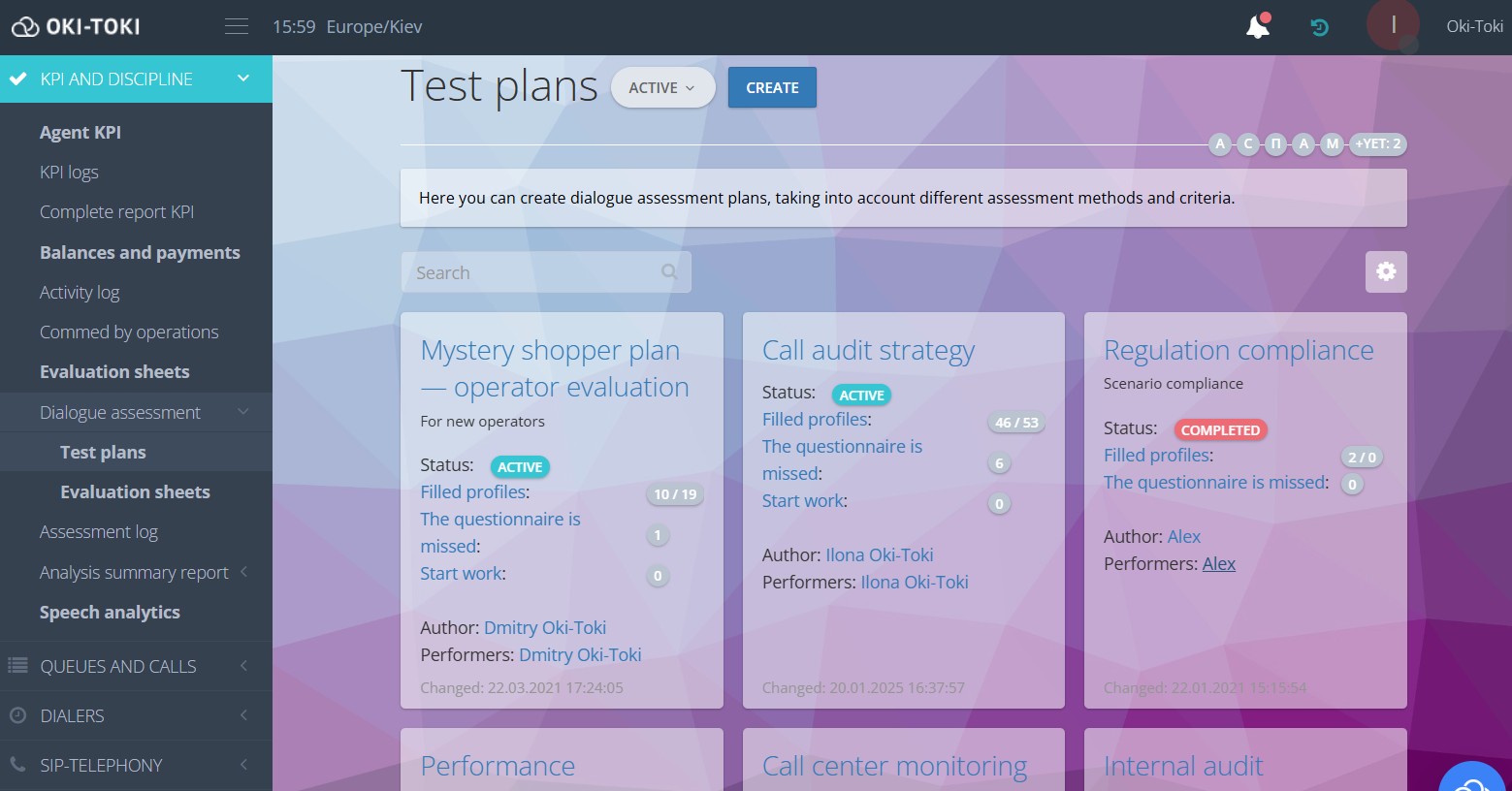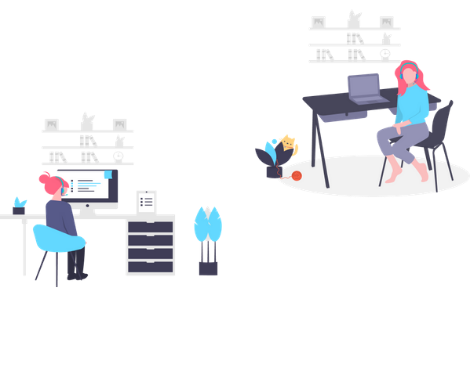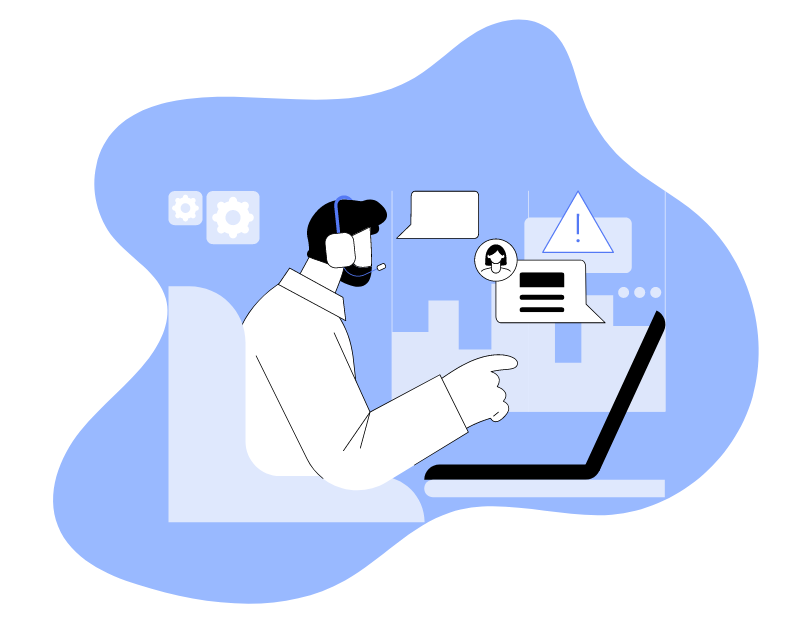We’ve all called a call center at some point and understand how important it is for communication with an agent to be professional and friendly. However, not all agents know how to communicate with clients at a high level. So how can we control the work of call center agents and improve service quality? In this article, we will discuss special methods that will help you with this task.
What is call evaluation and why is it needed?
Have you ever wondered how to check how well an agent in a contact center performs their job? One way is through call evaluation. It is the process of analyzing and assessing the quality of customer service, conducted by contact center specialists.
What happens during a call evaluation? Specialists listen to recordings of phone conversations between agents and clients and evaluate the agent’s performance based on various criteria. They pay attention to how polite and friendly the agent was, how accurately they understood the client’s problem, and how quickly they resolved it.
Why is this important? First of all, call evaluations help identify issues in the agents’ work and improve customer service quality. Once specialists identify shortcomings in customer interactions, they conduct additional training for agents to improve their skills.
Moreover, call evaluations help identify successful strategies and methods of agent performance that can be used to train new employees. Thus, this is a very important process that allows contact centers not only to improve service quality, but also to develop and improve.
So don’t hesitate to communicate with agents — they regularly undergo call evaluations and improve their skills to provide the highest quality customer service.
What tools in Oki-Toki help with call evaluations?
The contact center is an important communication channel between a business and its customers. Typically, the work of agents in the contact center impacts the brand’s image and customer satisfaction. However, achieving high performance levels from agents is not always possible. In this case, you can take advantage of some Oki-Toki tools that help control agent performance.
Dialogue evaluation
Dialogue evaluation is one of the key functions of the Oki-Toki service for call center quality control. This function allows you to evaluate a call based on criteria related to the quality of the dialogue between the agent and the client.
Dialogue evaluation helps identify problem areas in agent-client communication, assess their professionalism, and provide recommendations for improving service quality.

Transcription
Thanks to transcriptions, you can quickly read the conversation without wasting time listening. The karaoke mode allows you to match the audio recording’s text and highlight it during playback. Additionally, it is possible to export call recordings to a file or Google Drive.
Speech analytics
Speech analytics is an important tool for controlling agent quality. It automatically adds labels to transcriptions, indicating issues that need attention from the supervisor or quality control department. This feature helps track when an agent interrupts a client, pauses in dialogue, and the use of inappropriate language.
You can learn more about speech analytics and call center agent tools in a separate article.
It’s important to note that Oki-Toki offers the best value on the market, making it an attractive choice for companies that want to improve service quality and optimize their processes.
What is KPI for a call center agent?
KPI (Key Performance Indicators) are the key metrics that measure agent performance in a call center. They help determine how successfully agents perform their tasks and achieve their goals.
The main KPIs for call center agents include: response time to a call, waiting time in the queue, call duration, and the number of calls handled over a specific period. Customer satisfaction and the number of repeat calls can also be used as KPIs.
Using KPIs allows agents to monitor their performance and improve their work to achieve set goals and enhance customer service quality.
It’s important to remember that KPIs are not the only performance metric for evaluating agents in a call center. It’s essential to consider the business’s overall goals and customer expectations. Furthermore, agents should strive to provide high-quality service while listening to customer needs.
What are the main KPIs for a call center?
- Average Speed of Answer (ASA): This indicator reflects the average time it takes for an agent to answer a client’s call. ASA is an important metric because long waiting times can negatively impact customer satisfaction.
- Average Handle Time (AHT): AHT reflects the average time spent by agents on handling a client’s call, including talk time and waiting time. This metric helps assess agent productivity and determine if additional training is needed.
- Service Level (SL): SL determines the percentage of calls that agents must answer within a specific time (e.g., within 20 seconds). This metric helps ensure a quick response to clients.
- Call Volume: Call volume reflects the number of calls coming into the call center. This metric helps assess the workload of agents and determine if additional staff is needed.
- Conversion Rate: Conversion rate reflects the percentage of calls that result in the desired outcome (e.g., a product sale or problem resolution). This metric tracks agent performance and determines if changes need to be made in the customer service process.
Of course, there are many other KPIs that can be used in a call center. However, understanding the main indicators will help identify where to focus attention first. Therefore, regular evaluation of agent calls, analyzing results, and implementing improvements will significantly enhance the quality of dialogues with clients and the overall efficiency of the call center.



